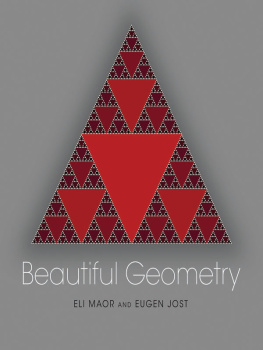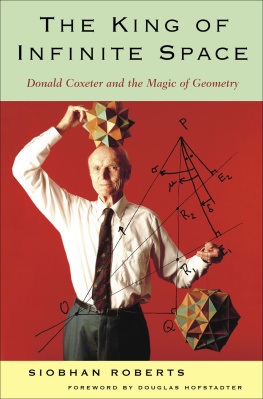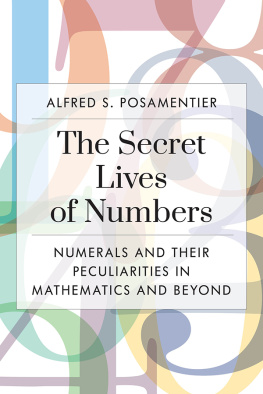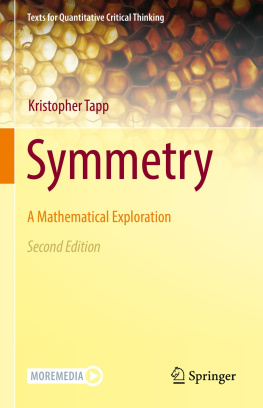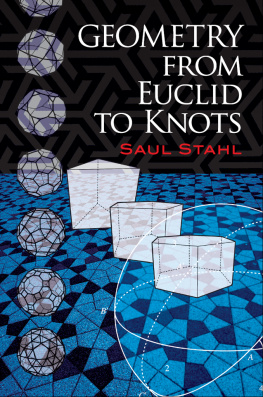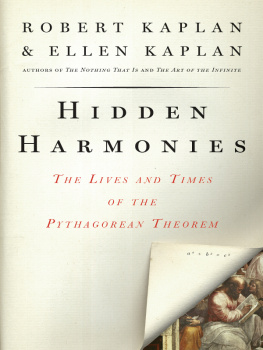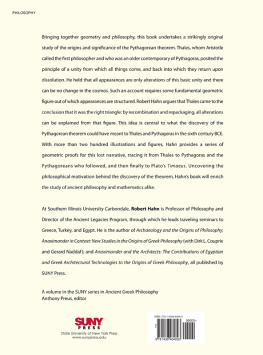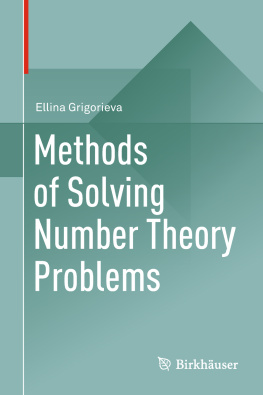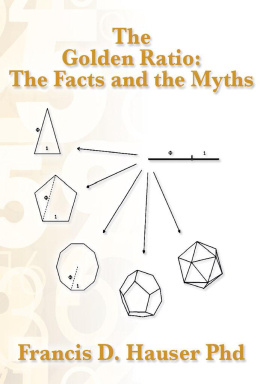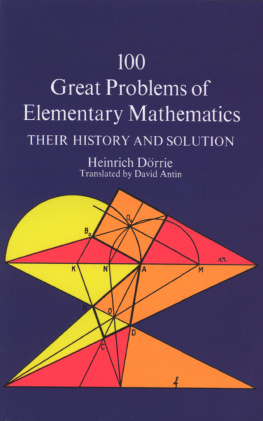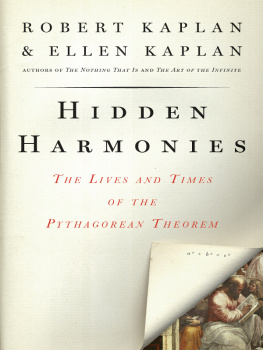
Beautiful Geometry
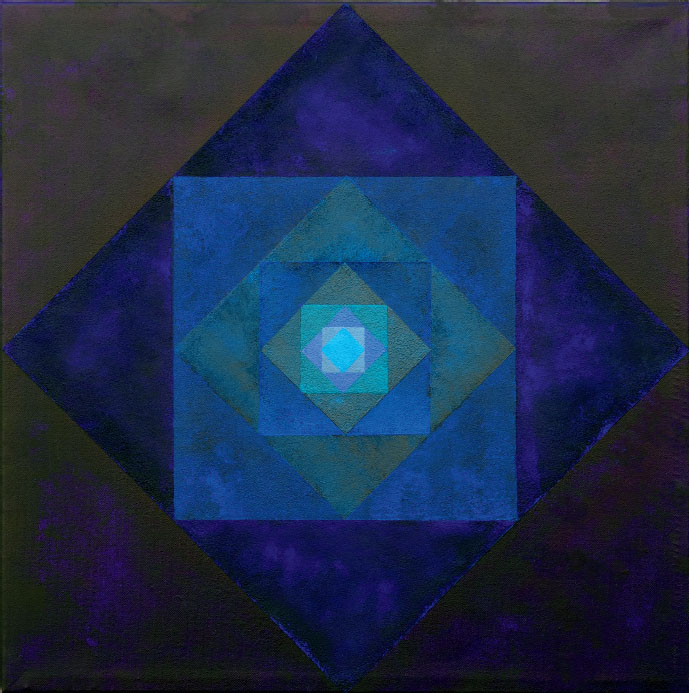
Frontispiece: Infinity
Beautiful Geometry
ELI MAOR and EUGEN JOST
Princeton Uxniversity Press
Princeton and Oxford
Copyright 2014 by Princeton University Press
Published by Princeton University Press, 41 William Street, Princeton, New Jersey 08540
In the United Kingdom: Princeton University Press, 6 Oxford Street, Woodstock, Oxfordshire OX20 1TW
press.princeton.edu
Jacket Illustration: Sierpinskis Arrowhead by Eugen Jost
All Rights Reserved
Library of Congress Cataloging-in-Publication Data
Maor, Eli.
Beautiful geometry / Eli Maor and Eugen Jost.
pages cm
Summary: If youve ever thought that mathematics and art dont mix, this stunning visual history of geometry will change your mind. As much a work of art as a book about mathematics, Beautiful Geometry presents more than sixty exquisite color plates illustrating a wide range of geometric patterns and theorems, accompanied by brief accounts of the fascinating history and people behind each. With artwork by Swiss artist Eugen Jost and text by acclaimed math historian Eli Maor, this unique celebration of geometry covers numerous subjects, from straightedge-and-compass constructions to intriguing configurations involving infinity. The result is a delightful and informative illustrated tour through the 2,500-year-old history of one of the most important and beautiful branches of mathematicsProvided by publisher.
Includes index.
ISBN-13: 978-0-691-15099-4 (cloth : acid-free paper)
ISBN-10: 0-691-15099-0 (cloth : acid-free paper) 1. GeometryHistory. 2. GeometryHistoryPictorial works. 3. Geometry in art. I. Jost, Eugen, 1950 II. Title.
QA447.M37 2014
516dc23
2013033506
British Library Cataloging-in-Publication Data is available
This book has been composed in Baskerville 10 Pro
Printed on acid-free paper.
Printed in Canada
1 3 5 7 9 10 8 6 4 2
To Dalia, my dear wife of fifty years
May you enjoy many more years of good health, happiness, and Naches from your family.
Eli
To my dear Kathrin and to my whole family
Two are better than one; because they have a good reward for their labor. For if they fall, the one will lift up his fellow (Ecclesiastes 4:9-10).
Eugen
Contents
Prefaces
ART THROUGH MATHEMATICAL EYES
ELI MAOR
N o doubt many people would agree that art and mathematics dont mix. How could they? Art, after all, is supposed to express feelings, emotions, and impressionsa subjective image of the world as the artist sees it. Mathematics is the exact oppositecold, rational, and emotionless. Yet this perception can be wrong. In the Renaissance, mathematics and art not only were practiced together, they were regarded as complementary aspects of the human mind. Indeed, the great masters of the Renaissance, among them Leonardo da Vinci, Michelangelo, and Albrecht Drer, considered themselves as architects, engineers, and mathematicians as much as artists.
If I had to name just one trait shared by mathematics and art, I would choose their common search for pattern, for recurrence and order. A mathematician sees the expression a2 + b2 and immediately thinks of the Pythagorean theorem, with its image of a right triangle surrounded by squares built on the three sides. Yet this expression is not confined to geometry alone; it appears in nearly every branch of mathematics, from number theory and algebra to calculus and analysis; it becomes a pattern, a paradigm. Similarly, when an artist looks at a wallpaper design, the recurrence of a basic motif, seemingly repeating itself to infinity, becomes etched in his or her mind as a pattern. The search for pattern is indeed the common thread that ties mathematics to art.

The present book has its origin in May 2009, when my good friend Reny Montandon arranged for me to give a talk to the upper mathematics class of the Alte Kantonsschule (Old Cantonal High School) of Aarau, Switzerland. This school has a historic claim to fame: it was here that a 16-year-old Albert Einstein spent two of his happiest years, enrolling there at his own initiative to escape the authoritarian educational system he so much loathed at home. The school still occupies the same building that Einstein knew, although a modern wing has been added next to it. My wife and I were received with great honors, and at lunchtime I was fortunate to meet Eugen Jost.
I had already been acquainted with Eugens exquisite mathematical artwork through our mutual friend Reny, but to meet him in person gave me special pleasure, and we instantly bonded. Our encounter was the spark that led us to collaborate on the present book. To our deep regret, Reny Montandon passed away shortly before the completion of our book; just one day before his death, Eugen spoke to him over the phone and told him about the progress we were making, which greatly pleased him. Sadly he will not be able to see it come to fruition.
Our book is meant to be enjoyed, pure and simple. Each topica theorem, a sequence of numbers, or an intriguing geometric patternis explained in words and accompanied by one or more color plates of Eugens artwork. Most topics are taken from geometry; a few deal with numbers and numerical progressions. The chapters are largely independent of one another, so the reader can choose what he or she likes without affecting the continuity of reading. As a rule we followed a chronological order, but occasionally we grouped together subjects that are related to one another mathematically. I tried to keep the technical details to a minimum, deferring some proofs to the appendix and referring others to external sources (when referring to books already listed in the bibliography, only the authors name and the books title are given). Thus the book can serve as an informaland most certainly not completesurvey of the history of geometry.
Our aim is to reach a broad audience of high school and college students, mathematics and science teachers, university instructors, and laypersons who are not afraid of an occasional formula or equation. With this in mind, we limited the level of mathematics to elementary algebra and geometry (elementary in the sense that no calculus is used). We hope that our book will inspire the reader to appreciate the beauty and aesthetic appeal of mathematics and of geometry in particular.
Many people helped us in making this book a reality, but special thanks go to Vickie Kearn, my trusted editor at Princeton University Press, whose continuous enthusiasm and support has encouraged us throughout the project; to the editorial and technical staff at Princeton University Press for their efforts to ensure that the book meets the highest aesthetic and artistic standards; to my son Dror for his technical help in typing the script of in Hebrew; and, last but not least, to my dear wife Dalia for her steady encouragement, constructive critique, and meticulous proofreading of the manuscript.
PLAYING WITH PATTERNS, NUMBERS, AND FORMS
EUGEN JOST
M y artistic life revolves around patterns, numbers, and forms. I love to play with them, interpret them, and metamorphose them in endless variations. My motto is the Pythagorean motto: Alles ist Zahl (All is Number); it was the title of an earlier project I worked on with my friends Peter Baptist and Carsten Miller in 2008. Beautiful Geometry
Next page
